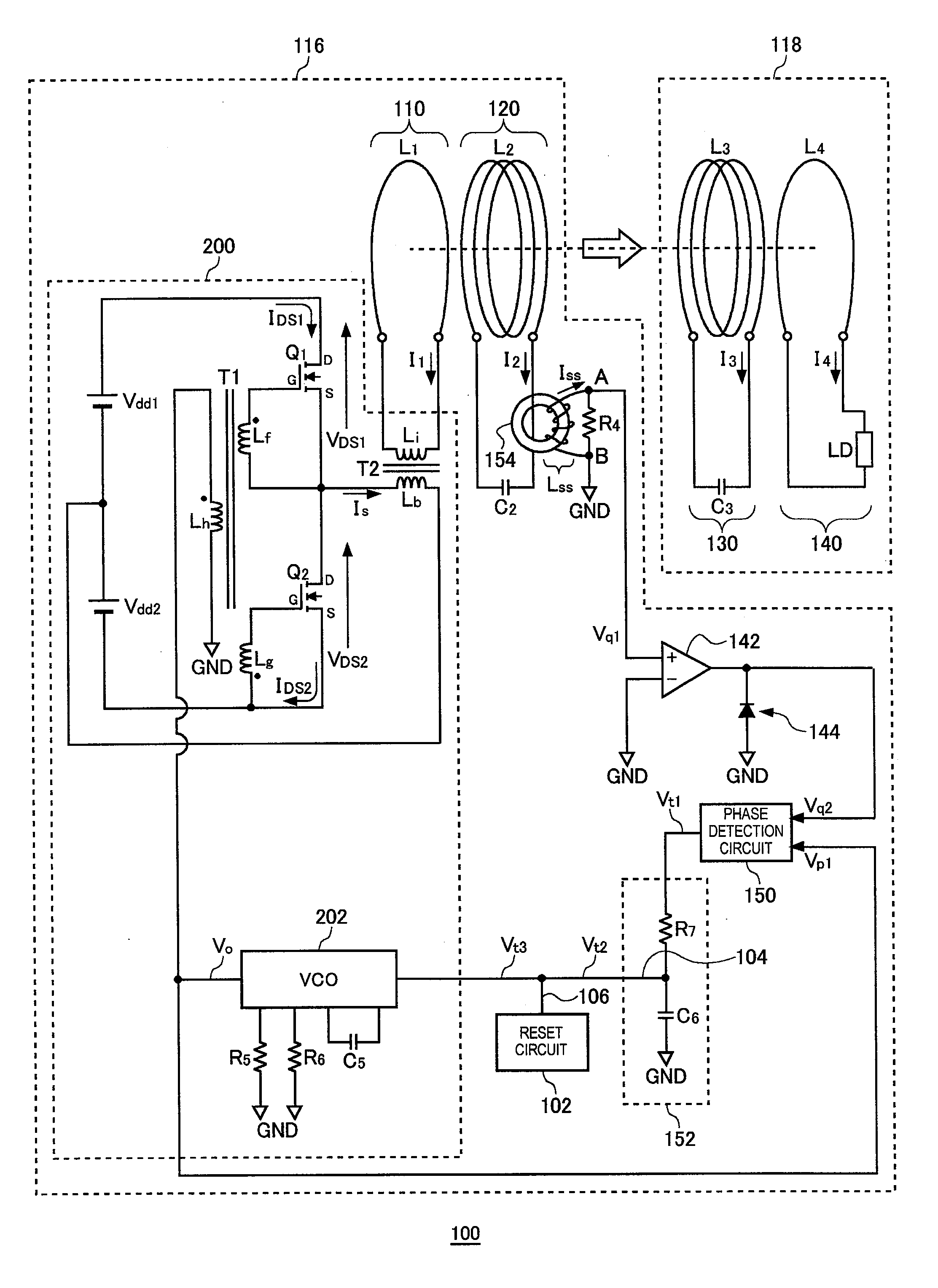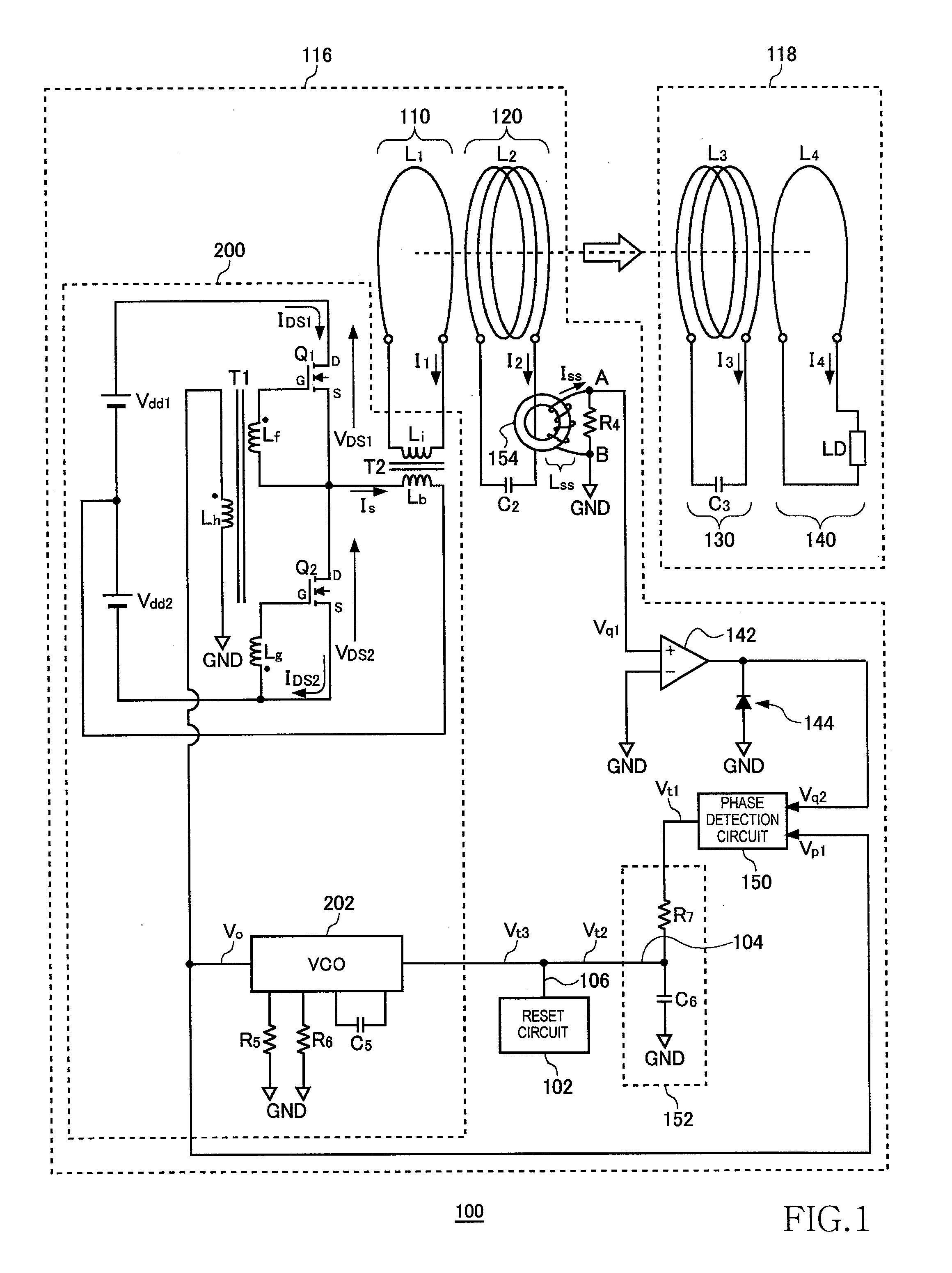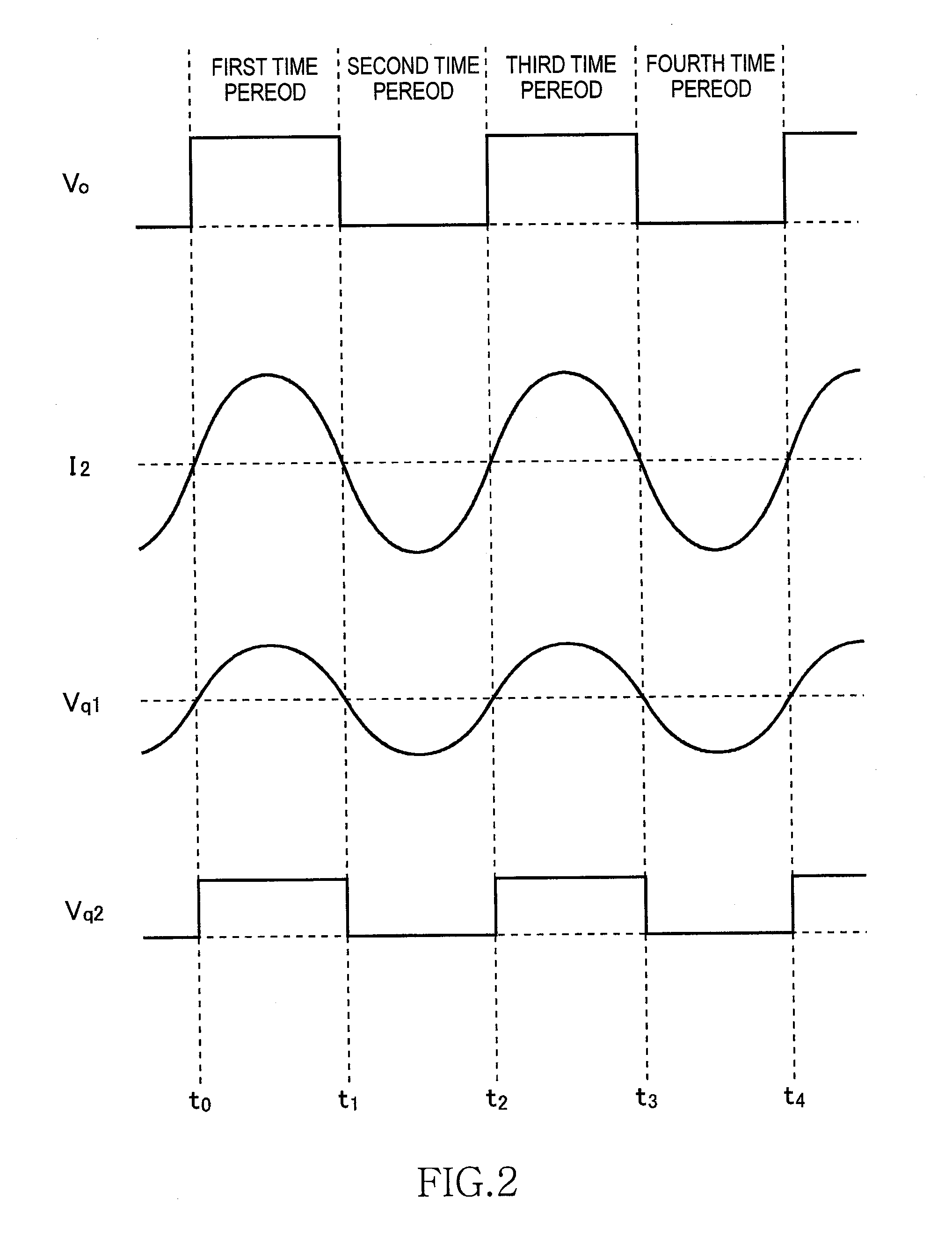Wireless power feeder and wireless power transmission system
a technology of wireless power transmission system and wireless power feeder, which is applied in the direction of transformer/inductance circuit, circuit arrangement, inductance, etc., can solve the problem of not being able to feed big electric power
- Summary
- Abstract
- Description
- Claims
- Application Information
AI Technical Summary
Benefits of technology
Problems solved by technology
Method used
Image
Examples
first embodiment
[0037]FIG. 1 is a system configuration view of a wireless power transmission system 100 according to the first embodiment. The wireless power transmission system 100 includes a wireless power feeder 116 and a wireless power receiver 118. The wireless power feeder 116 includes, as basic components, a power transmission control circuit 200, an exciting circuit 110, and a feeding coil circuit 120. The wireless power receiver 118 includes a receiving coil circuit 130, and a loading circuit 140.
[0038]A distance of several meters is provided between a feeding coil L2 of the feeding coil circuit 120 and a receiving coil L3 of the receiving coil circuit 130. The wireless power transmission system 100 mainly aims to feed AC power from the feeding coil L2 to receiving coil L3 by wireless. The wireless power transmission system according to the present embodiment is assumed to operate at a resonance frequency fr of 100 kHz or less. In the present embodiment, a resonance frequency fr is set to ...
second embodiment
[0099]FIG. 10 is a system configuration view of a wireless power transmission system 108 according to a second embodiment. The wireless power transmission system 108 includes a wireless power feeder 156 and a wireless power receiver 118. The wireless power feeder 156 includes, as basic components, a power transmission control circuit 204, an exciting circuit 110, and a feeding coil circuit 120. A distance of several meters is provided between the feeding coil circuit 120 and receiving coil circuit 130. As in the case of the first embodiment, the wireless power transmission system 108 mainly aims to feed power from the feeding coil circuit 120 to receiving coil circuit 130. Components designated by the same reference numerals as those of FIGS. 1 and 8 have the same or corresponding functions as those described above.
[0100]The exciting circuit 110 is a circuit in which an exciting coil L1 and a transformer T2 secondary coil Li are connected in series. The exciting circuit 110 receives...
PUM
 Login to View More
Login to View More Abstract
Description
Claims
Application Information
 Login to View More
Login to View More - R&D
- Intellectual Property
- Life Sciences
- Materials
- Tech Scout
- Unparalleled Data Quality
- Higher Quality Content
- 60% Fewer Hallucinations
Browse by: Latest US Patents, China's latest patents, Technical Efficacy Thesaurus, Application Domain, Technology Topic, Popular Technical Reports.
© 2025 PatSnap. All rights reserved.Legal|Privacy policy|Modern Slavery Act Transparency Statement|Sitemap|About US| Contact US: help@patsnap.com



